Brussels sprouts, those small and mighty green gems that resemble miniature cabbages, have gained quite the reputation as picky and challenging plants to grow. However, the reality is far from it. With the right knowledge and a few tips and tricks up your sleeve, you can successfully cultivate a thriving brussel sprout plant in your own backyard.
Whether you’re a novice gardener looking to try your hand at growing vegetables or a seasoned plant enthusiast seeking a new addition to your edible garden, this article will guide you through the process of growing brussels sprouts with ease.
Key Takeaways:
- Growing Brussels sprouts is not as difficult as it seems, even for beginners.
- With the right knowledge and tips, you can cultivate a thriving brussel sprout plant in your own backyard.
- This article will guide you through the process of growing and caring for brussels sprouts.
- Brussels sprouts are a delicious and nutritious addition to your garden harvest.
- Experiment with different varieties and techniques to find what works best for your garden.
Ideal Climate for Growing Brussels Sprouts
When it comes to growing Brussels sprouts, the ideal climate plays a crucial role in the success of your brussel sprout plant. While Brussels sprouts thrive in the cool temperatures of the “fog belt” of the Pacific Northwest, they can also be grown in other parts of the country. However, it’s important to remember that Brussels sprouts mature best in cool and even light frosty weather.
Planting brussels sprouts in hot or dry weather may not yield the desirable results you’re aiming for. The sprouts tend to develop a milder flavor and a looser texture. To ensure the best flavor and quality, it’s best to provide the ideal climate for your brussel sprout plant.
Now, let’s take a closer look at the ideal climate requirements for growing Brussels sprouts:
“Brussels sprouts thrive in cool temperatures, making them a perfect fit for the ‘fog belt’ of the Pacific Northwest.”
1. Cool Temperatures:
Brussels sprouts prefer cool temperatures for optimal growth and development. Cool weather encourages the formation of firm, compact sprouts. They can tolerate light frosts, but prolonged exposure to freezing temperatures can damage the plants.
2. Moderate Humidity:
While Brussels sprouts prefer cool temperatures, they also thrive in moderate humidity levels. The combination of cool temperatures and moderate humidity creates the ideal environment for these delicious vegetables to flourish.
3. Adequate Sunlight:
Brussels sprouts require at least 6 hours of direct sunlight daily to ensure proper growth and development. Choose a location in your garden that receives ample sunlight throughout the day.
4. Well-Drained Soil:
Ensure that the soil is well-drained to prevent waterlogging, which can lead to root rot. Brussels sprouts prefer soil with a pH level of around 6.8, slightly acidic to neutral. Test your soil and make necessary amendments to create the ideal growing conditions.
5. Protection from Strong Winds:
While Brussels sprouts can tolerate cool temperatures, they are sensitive to strong winds. Plant them in a location that is protected from strong gusts, or consider using physical barriers like fences or windbreaks to shield the plants.
By providing the ideal climate for your Brussels sprouts, you can ensure healthy growth and a bountiful harvest. Remember to monitor the weather conditions and make any necessary adjustments to protect your brussel sprout plants during extreme weather events.
| Climate Requirements | Conditions |
|---|---|
| Cool Temperatures | Optimal temperature range: 60°F to 70°F (15°C to 21°C) |
| Moderate Humidity | Average humidity range: 40% to 60% |
| Adequate Sunlight | Minimum 6 hours of direct sunlight daily |
| Well-Drained Soil | pH level of around 6.8, slightly acidic to neutral |
| Protection from Strong Winds | Plant in a sheltered location or use physical barriers |
Soil and Planting Tips for Brussels Sprouts
When it comes to growing healthy and bountiful Brussels sprouts, the right soil and proper planting techniques are crucial. Brussels sprouts thrive in well-drained and fertile soil with a pH of 6.8. It’s essential to test the soil pH and amend it accordingly to provide the best conditions for your brussel sprout plants.
To improve the soil quality, incorporating organic matter such as compost or aged manure can work wonders. This will enrich the soil with necessary nutrients and enhance its fertility, creating a hospitable environment for your Brussels sprouts to thrive.
When planting Brussels sprouts, be sure to give them plenty of space. These plants require adequate room for their roots to grow and sufficient airflow to prevent diseases. Space the plants 18-24 inches apart to allow for proper growth and development.
Additionally, it is crucial to choose a planting location that receives at least 6 hours of sunlight daily. Brussels sprouts need ample sunlight to produce healthy foliage and develop firm sprouts. Ensure your chosen spot receives enough sunlight throughout the day to give your brussel sprout plants the best chance of success.
Key Takeaways:
- Brussels sprouts prefer well-drained and fertile soil with a pH of 6.8.
- Test the soil pH and amend it accordingly to provide optimal growing conditions.
- Incorporate organic matter such as compost or aged manure to improve soil quality.
- Space Brussels sprout plants 18-24 inches apart to allow for proper growth and airflow.
- Choose a planting location that receives at least 6 hours of sunlight daily for optimal development.
Creating the perfect soil environment for your Brussels sprouts will set the stage for a successful harvest. With well-drained and fertile soil, enriched with organic matter, and proper spacing, your brussel sprout plants will have a solid foundation for growth. Don’t forget to consider the ideal location that provides ample sunlight to keep your plants happy and healthy throughout their journey.
Care and Maintenance of Brussels Sprout Plants
When it comes to caring for your brussel sprout plants, a little attention can go a long way. Follow these brussel sprout plant care tips to ensure healthy growth and a bountiful harvest.
Watering
Brussels sprouts need regular watering to thrive. Aim to provide about 1 to 1.5 inches of water per week, evenly moistening the soil. Avoid overwatering, as this can lead to root rot. Mulching around the plants can help retain soil moisture and prevent weed growth.
Feeding
Regular feeding is essential for the optimal growth of brussel sprout plants. Use a continuous-release plant food to provide a steady supply of nutrients throughout the growing season. Follow the manufacturer’s instructions for application rates and timing to ensure healthy and robust plants.
Pest Control
Brussels sprout plants can face various pests, including aphids, cabbage loopers, and webworms. Monitor your plants regularly and take prompt action if you notice any signs of infestation. Consider using organic pest control methods or consult a gardening professional for specific recommendations.
Disease Prevention
Brussel sprout plants can be susceptible to diseases such as powdery mildew and rust. To prevent these diseases, ensure proper air circulation around the plants by providing adequate spacing. Remove any diseased plant material promptly to prevent the spread of the infection.
Pruning
Pruning the lower leaves of brussel sprout plants can help promote healthy growth and improve air circulation. Remove any yellowing or damaged leaves, as they can attract pests or harbor diseases. Use clean pruning shears to prevent the spread of infections.
By following these brussel sprout plant care tips, you can create an ideal environment for your plants to thrive. Regular watering, feeding, pest control, disease prevention, and pruning are key to ensuring healthy and productive brussel sprout plants.
Harvesting Brussels Sprouts
When it comes to reaping the rewards of your hard work growing Brussels sprouts, timing is key. Knowing when to harvest these delicious little veggies ensures that they are at their peak flavor and texture. Here’s what you need to know about harvesting your Brussels sprouts.
Brussels sprouts are ready to harvest when the sprouts are firm, green, and reach a diameter of 1 to 2 inches. This is typically around 90 to 100 days after planting. You can start harvesting from the bottom of the plant and work your way up, plucking the sprouts off the stem as they mature.
It’s important to leave the top leaves intact, even after harvesting the lower sprouts. These leaves provide protection to the remaining sprouts from snow and frost, especially in colder climates. This ensures that you can continue to harvest fresh sprouts throughout the season.
Once harvested, Brussels sprouts can be stored in the refrigerator for up to a few days. It’s best to keep them unwashed and in a plastic bag to maintain their freshness. When you’re ready to enjoy them, simply wash the sprouts thoroughly before cooking or using them in your favorite recipes.
So, keep an eye on your Brussels sprout plants, and when those firm and green sprouts reach the perfect size, it’s time to harvest and savor the delicious flavors they offer.
Next, we’ll explore some valuable tips for storing Brussels sprouts to ensure that you can enjoy their freshness and flavor for longer periods.
Tips for Storing Brussels Sprouts
When it comes to storing brussels sprouts, proper handling is key to preserving their freshness and flavor. Here are a few tips to keep your brussels sprouts in optimal condition:
- Keep them unwashed: It’s best to store brussels sprouts in the refrigerator without washing them. Washing can cause moisture buildup, leading to premature spoiling.
- Use plastic bags: Place the unwashed brussels sprouts in sealed plastic bags to keep them protected and maintain moisture levels. This will help prolong their shelf life.
- Use within a few days: Brussels sprouts are best consumed within a few days of purchase or harvest. The longer they sit, the more their flavor and texture diminish.
Did you know? The leaves of brussels sprouts are also edible and can be cooked and enjoyed, similar to collard greens. Don’t let them go to waste!
“Proper storage is essential to maintain the taste and quality of brussels sprouts for a longer period. Follow these tips and enjoy the delicious flavor of these mini cabbages for days to come!”
When and How to Plant Brussels Sprouts
Planting Brussels sprouts requires careful timing and proper techniques to ensure a successful harvest. Here’s a guide on when and how to plant your Brussels sprouts to maximize growth and yield.
When to Plant Brussels Sprouts
Brussels sprouts should be planted 6-10 weeks before the first expected frost. This timing allows the plants to mature in cooler weather, enhancing their flavor and texture. In most regions, planting Brussels sprouts in early spring or mid to late summer is ideal for a fall harvest.
Starting From Seeds
If you want to start your Brussels sprouts from seeds, begin the process indoors. About 8-10 weeks before the desired planting date, sow the seeds in seed trays or pots filled with seed-starting mix. Plant the seeds about ¼ to ½ inch deep, spacing them apart to allow room for growth.
Place the seed trays in a warm area with indirect sunlight. Keep the soil consistently moist but not waterlogged. After the sprouts have grown to about 3-4 inches tall, they’re ready to be transplanted into the garden.
Sowing Directly in the Garden
If you prefer sowing Brussels sprouts directly in the garden, wait until the soil has warmed up and all danger of frost has passed. Prepare the planting area by loosening the soil and incorporating compost or aged manure to improve its fertility.
Sow the Brussels sprout seeds about ¼ to ½ inch deep, spacing them according to the recommended plant spacing. Ensure the soil remains consistently moist until the seedlings emerge.
Planting Seedlings
Whether you started your Brussels sprouts from seeds indoors or purchased seedlings, it’s important to transplant them properly. Choose a sunny spot in your garden with well-drained and moderately fertile soil.
Before transplanting, harden off the seedlings by gradually exposing them to outdoor conditions over a period of 7-10 days. This process helps them acclimate to the changes in temperature and sunlight intensity.
Plant the Brussels sprout seedlings 18-24 inches apart, providing enough space for the plants to grow and develop. Gently remove the seedlings from their containers, taking care not to damage the roots. Dig holes slightly larger than the root balls and place the seedlings in the holes.
Once planted, water the seedlings thoroughly to ensure good root establishment. Maintain consistent moisture in the soil throughout the growing season to support healthy growth.
Brussels Sprout Planting Tips
| Planting Method | Timing | Spacing | Soil Requirements |
|---|---|---|---|
| Starting from seeds indoors | 8-10 weeks before first expected frost | Space seeds apart in trays or pots | Well-drained, fertile soil |
| Sowing directly in the garden | After the soil has warmed up and danger of frost has passed | Space seeds according to recommended plant spacing | Well-drained, moderately fertile soil |
| Planting seedlings | 6-10 weeks before first expected frost or after the soil has warmed up | 18-24 inches apart | Well-drained, moderately fertile soil |
Growing Brussels Sprouts: Tips and Tricks
When it comes to growing brussel sprouts, there are a few key tips and tricks that can help ensure a successful harvest. From watering to pest control, here are some important considerations for caring for your brussel sprout plants:
1. Regular Watering:
Brussels sprouts require consistent moisture to thrive. Aim to provide about 1 to 1.5 inches of water per week, either through rainfall or irrigation. This will help keep the soil evenly moist and promote healthy growth.
2. Feeding and Fertilizing:
Brussel sprout plants benefit from regular feeding with a balanced fertilizer. Choose a slow-release plant food that provides essential nutrients such as nitrogen, phosphorus, and potassium. Follow the instructions on the fertilizer packaging for proper application.
3. Protection from Pests and Diseases:
Brussels sprouts can be susceptible to pests like aphids, cabbage loopers, and webworms. Consider using row covers to protect your plants from these pests. Additionally, inspect your plants regularly for signs of diseases such as powdery mildew and rust. Promptly address any issues to prevent further damage.
4. Thinning and Pruning:
Thinning your brussel sprout plants can promote healthy growth and improve air circulation. Remove any crowded or weak plants to give the remaining ones more space to develop. Pruning the lower leaves can also help redirect energy to the sprouts and increase their size.
5. Choosing the Right Variety:
Not all brussel sprout varieties are suited to every climate. When selecting seeds or seedlings, choose a variety that is known to perform well in your specific climate zone. This will increase the chances of a successful harvest.
By following these tips and tricks, you can ensure that your brussel sprout plants thrive and produce an abundant crop of delicious sprouts. With regular care and attention, you’ll be enjoying the fruits of your labor in no time!
Conclusion
Growing Brussels sprouts in your garden can be a rewarding and fulfilling experience. With the right growing conditions and regular care, you can enjoy a bountiful harvest of delicious and nutritious brussels sprouts. Whether you are a beginner or an experienced gardener, experimenting with different varieties and techniques can be an exciting way to discover what works best for your garden.
Brussels sprouts thrive in cool temperatures and require well-drained and fertile soil. Providing them with at least 6 hours of sunlight and consistent moisture will promote healthy growth. Regular watering, feeding, and protection from pests and diseases are essential for their overall well-being. Thin the plants and prune the lower leaves to redirect energy to the sprouts.
When the brussels sprouts reach firm and green, they are ready to be harvested. Start from the bottom of the plant and work your way up. Store them unwashed in plastic bags in the refrigerator for a few days for optimal freshness. And don’t forget, the leaves of brussels sprouts can be cooked and enjoyed just like collards, adding versatility to your culinary repertoire.
So why wait? Start growing brussels sprouts in your garden today and relish the satisfaction of enjoying homegrown, flavorful sprouts. Embrace the process and have fun as you watch your brussels sprout plants thrive and yield a delicious harvest. Happy growing!

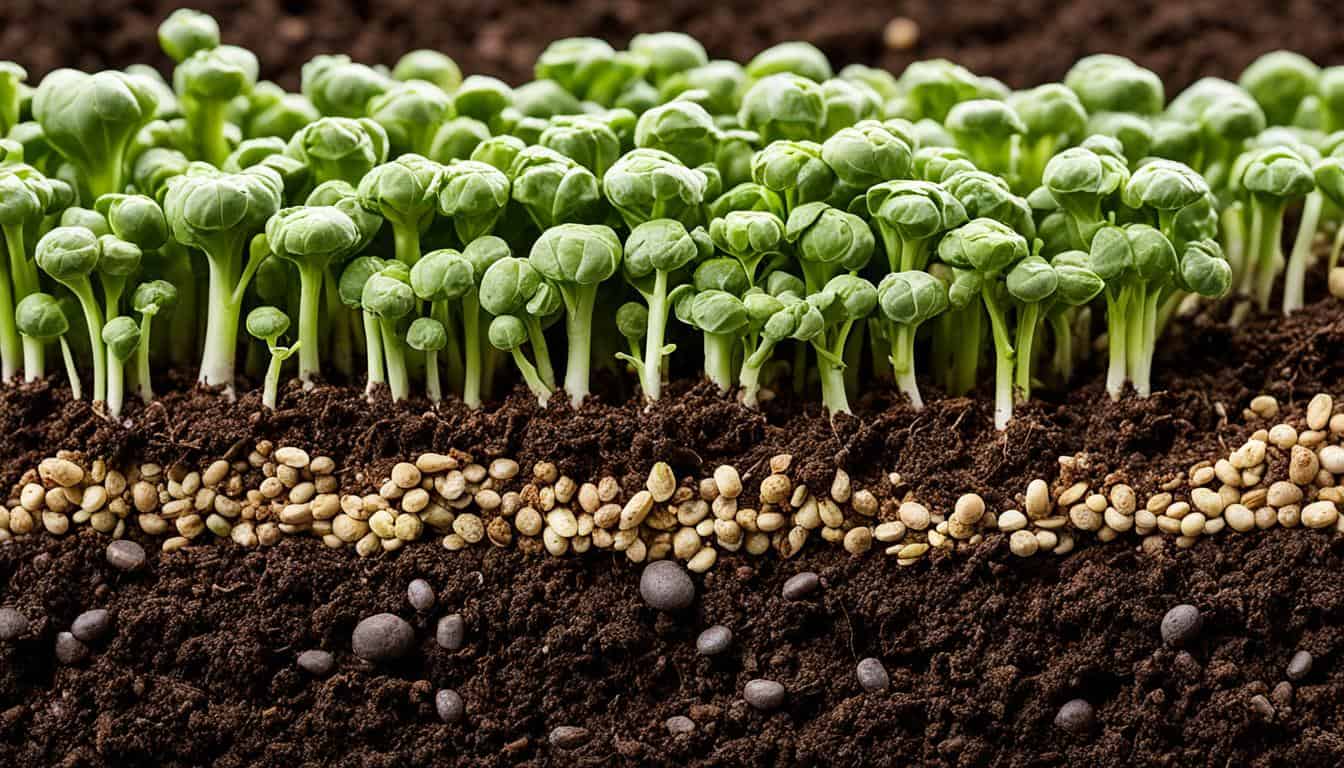
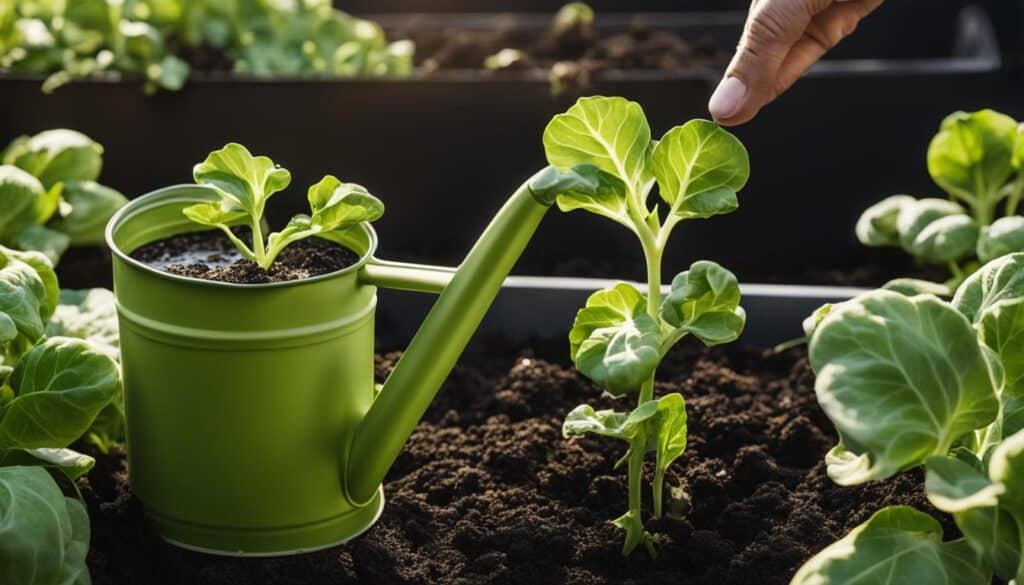
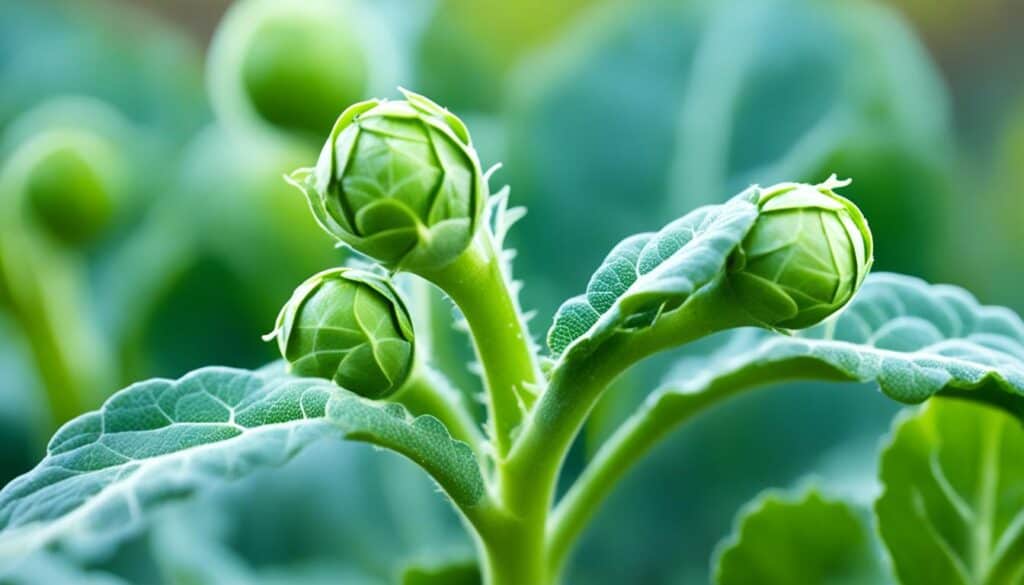
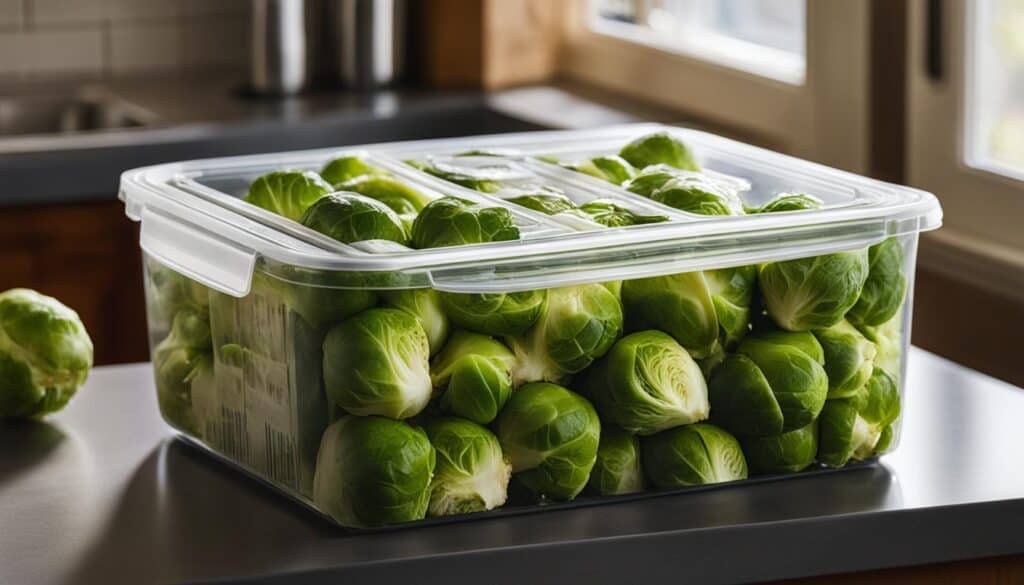
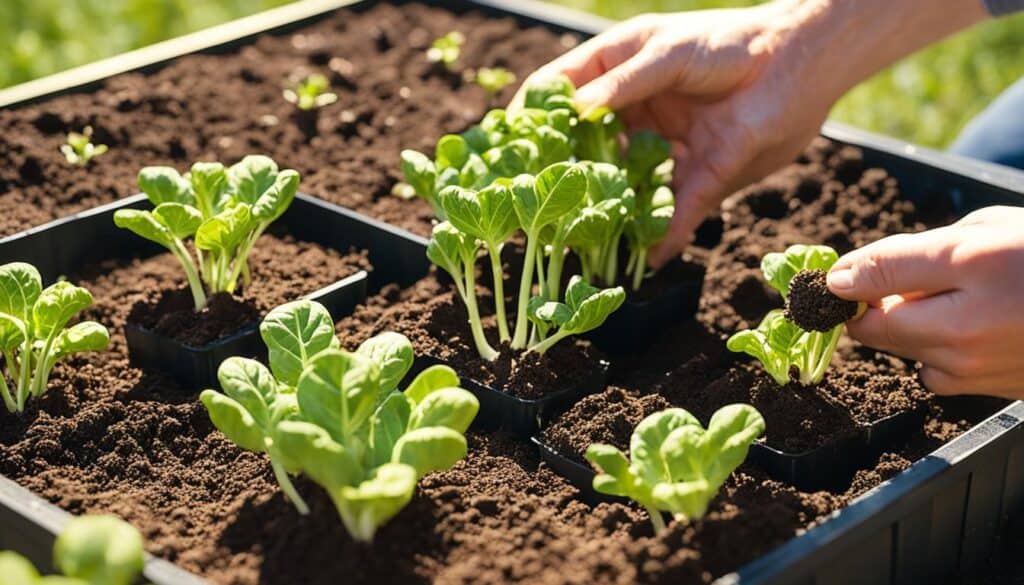
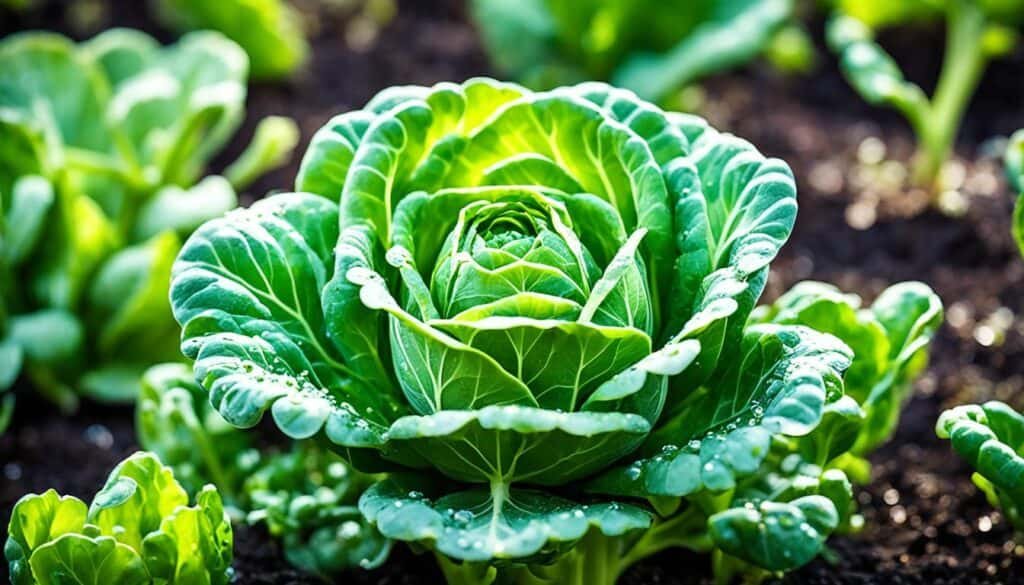
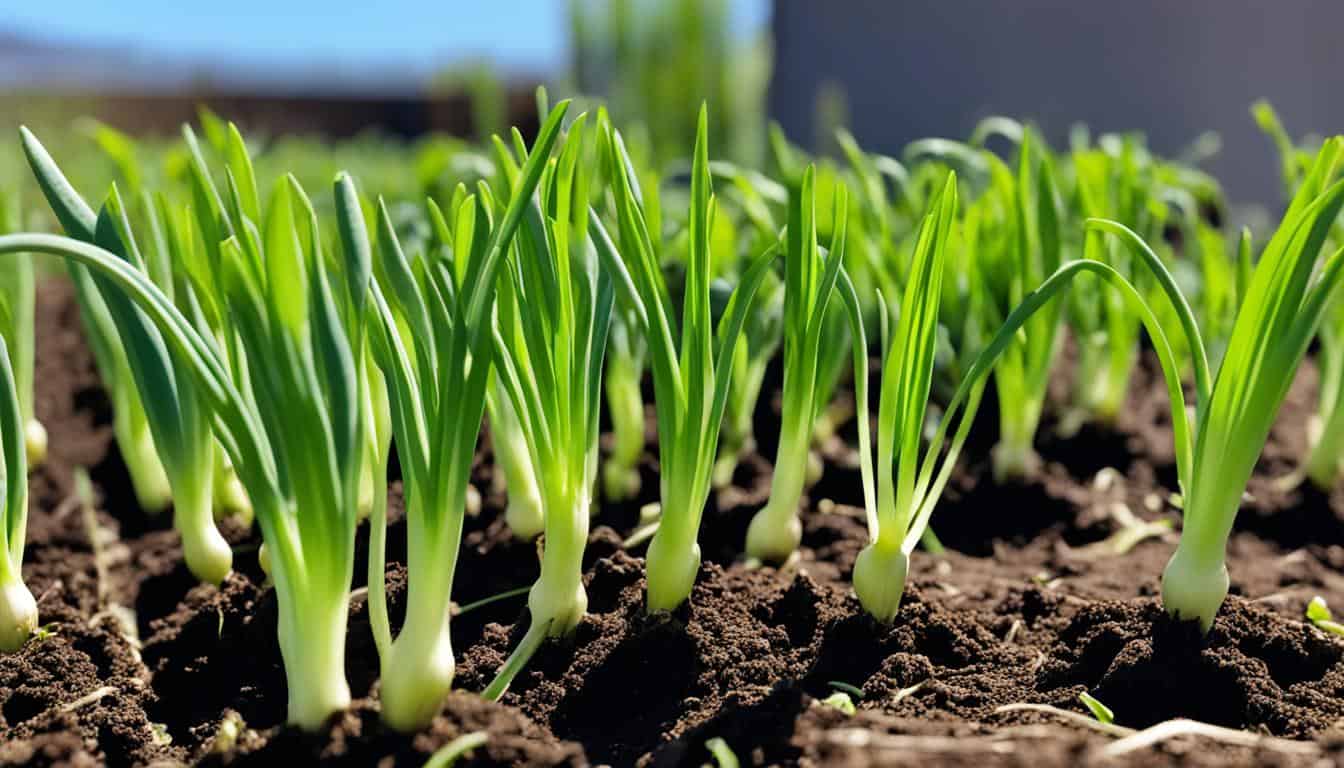
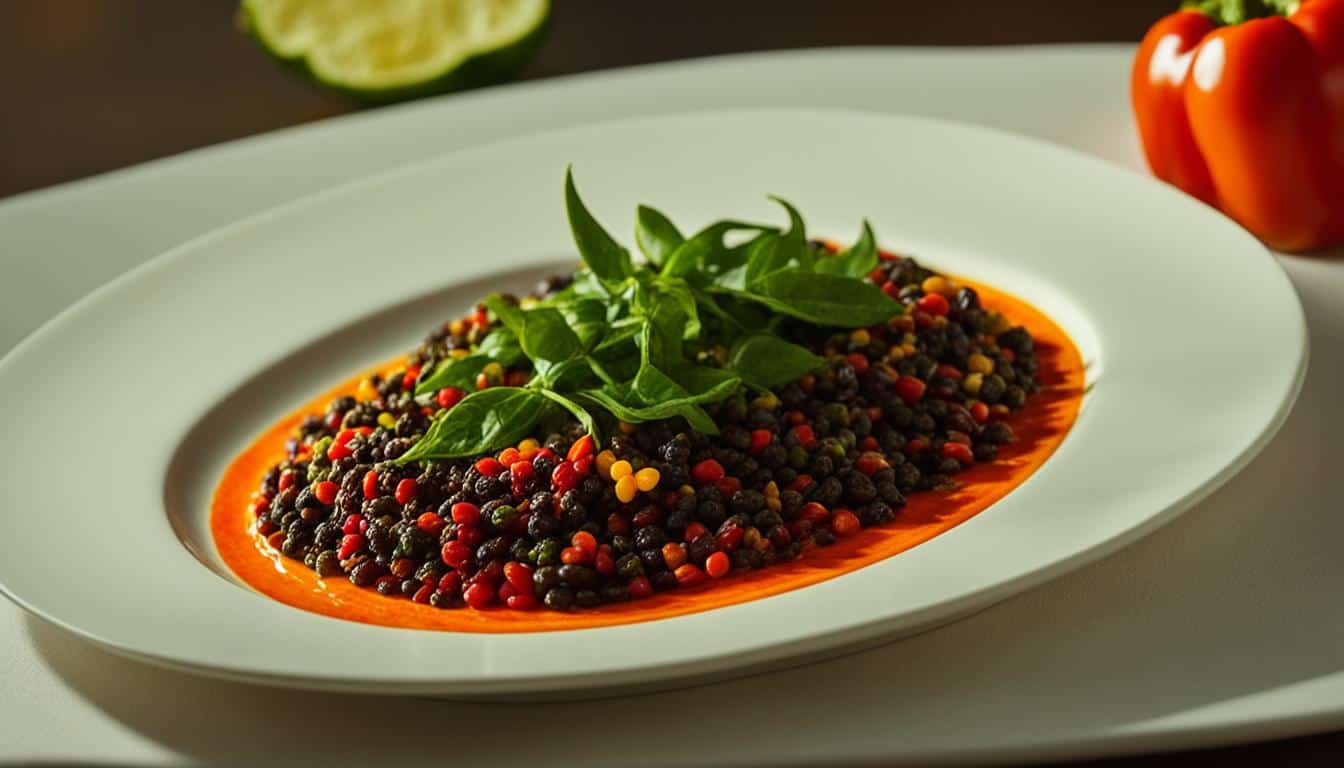
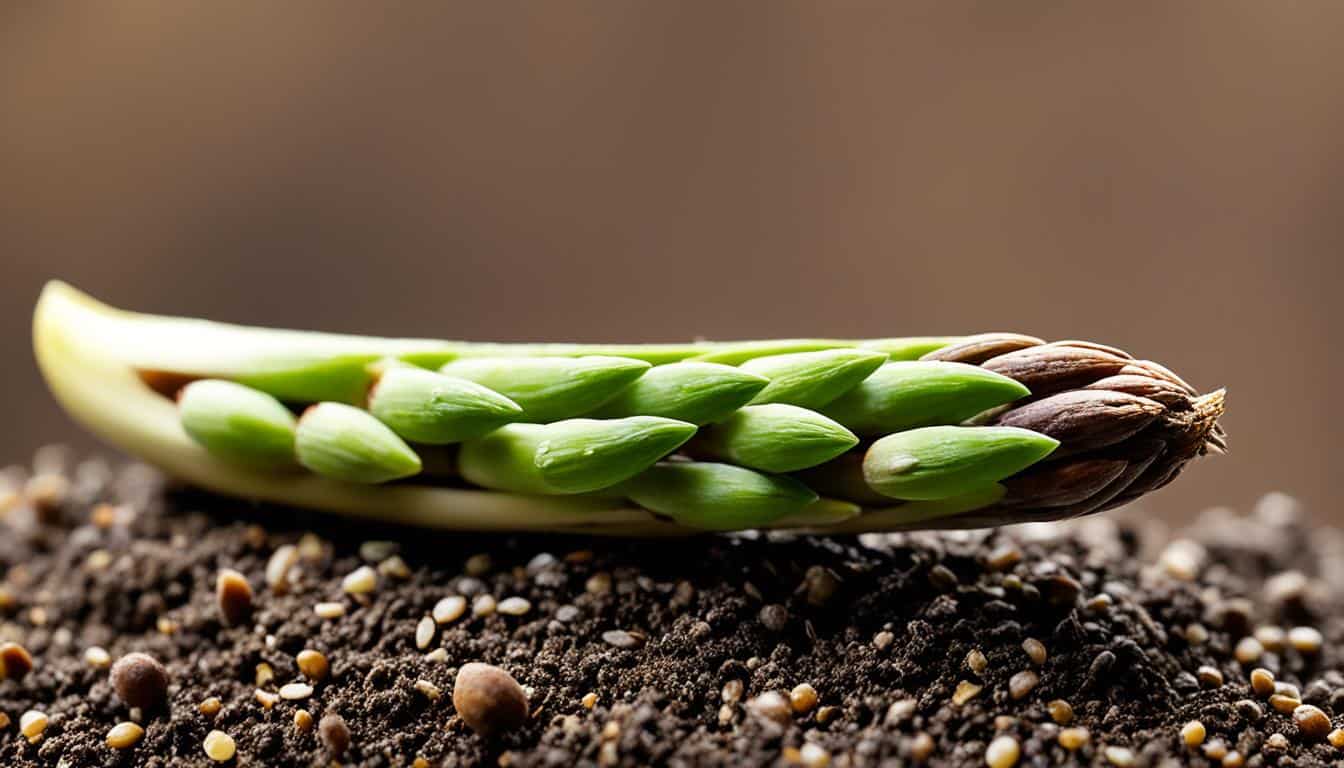
Leave a Reply